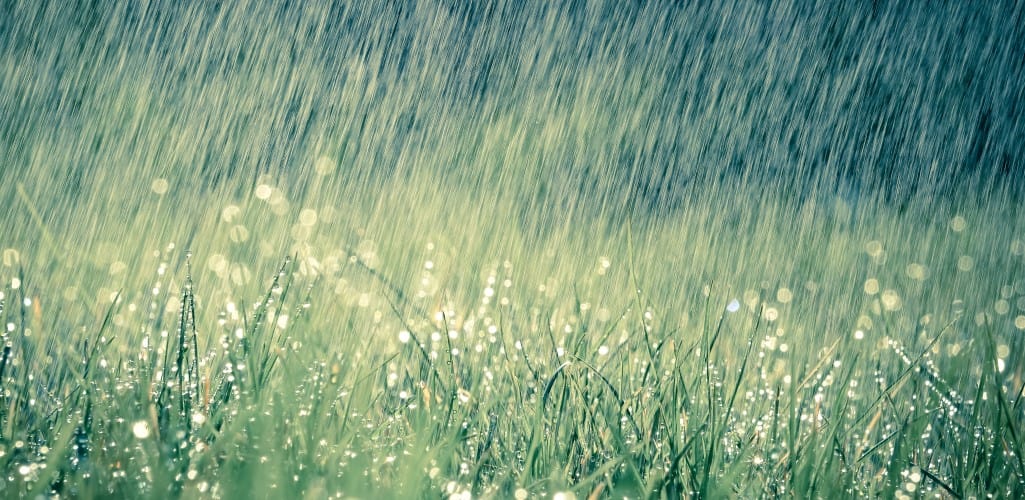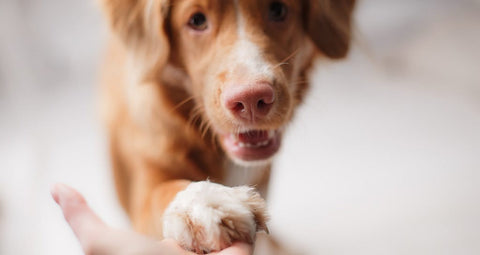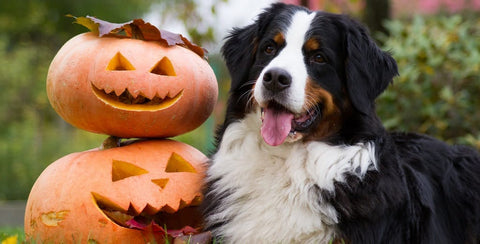

Keeping your pet calm in a storm
Storms can be really scary for cats and dogs. The rumble of thunder and flashes of lightning can have them diving for cover. Some pets even go on to develop phobias of thunderstorms.
Here we look at why cats and dogs are scared of storms, the signs of fear and distress you should look out for and the YuMOVE calming supplements for dogs that can help, and how you can keep your pet calm during a storm.
Can dogs and cats sense a storm is coming?
First, though, we wanted to investigate whether your pet can tell if a storm is on its way. You hear tales of dogs and cats instinctively knowing when a storm is brewing and taking shelter, well before us humans have spotted dark clouds on the horizon.
There’s even folklore associated with this belief. Some say that if a cat lies with its back towards the fire, a storm is on its way.
More prosaically, it’s likely that cats can sense the change in barometric pressure that heralds a storm. Dogs may also be able to detect an incoming storm by sniffing a change in the air or perhaps hearing a far-off rumble of thunder that’s inaudible to humans.
Why storms can be frightening for pets
Storms can scare both cats and dogs. In some cases, the same reasons apply. Both cats and dogs dislike sudden, loud noises. As our furry friends have such sensitive hearing, sounds that we find simply startling can be positively overwhelming for them.
Along with fireworks, cars backfiring, the roar of a passing motorbike and the clattering of a skateboard, the rumble of thunder is right up there in the category of sounds that your pet is likely to find frightening.
Sudden flashes of lightning can also spook our four-pawed companions. When a storm rolls in, we expect to see lightning and can even enjoy watching the highly-charged visual display. Animals, though, don’t know what’s going on and can find lightning extremely unsettling. It’s one more reason why they might dash off to find a safe space.

Is that coat waterproof?
Dogs and cats are equally unlikely to want to go out in a thunderstorm. But if they do, at least your dog’s coat will dry faster.
The outer layer of your dog’s coat is made up of guard hairs. These are naturally oily (particularly for dogs bred to retrieve game from water such as spaniels) and help to stop water seeping through to the undercoat. So if your dog is out in the rain or goes for a swim, their coat helps protect them from getting soaked to the skin.
Cats also have an outer layer of guard hairs, but their coats hold, rather than repel water. When they get wet, it’s harder for them to dry off. A water-logged cat is not a happy cat, which is why your cat will usually do its best to avoid a downpour.
How to spot signs of fear
How can you tell if your cat or dog is scared of thunderstorms? If they suddenly bolt off and hide, that’s one obvious clue. Apart from that, here are some common signs of fear to look out for.
If your dog is scared of storms, they might:
- Shake
- Whine
- Pace
- Pant
- Lick their paws
If your cat is scared of storms, they might:
- Pace
- Pant
- Tremble
- Hiss
- Spit
You might also notice physical signs in your cat such as enlarged pupils, raised hair on their body and a bushy tail.

5 ways to calm your pet in a storm
Here are our tips on how to keep your cat or dog calm during a storm. You can also read some specific recommendations for protecting your cat in a storm.
1. Keep them indoors
Don’t let your pet out in a storm. They might be whining or scratching at the door, but they are much safer indoors. If necessary, shut the cat flap so your cat can’t bolt outside.
2. Give them a safe space
Your pet will naturally want to find somewhere where they feel secure away from the flashes of lightning, rumbles of thunder and howling wind. For your dog, this might mean putting their crate or dog bed in a quiet room out of the way, perhaps draping a blanket over their crate. For a cat, an ‘igloo’ style bed provides a cosy, comforting, enclosed space where they can curl up and feel safe.
3. Play soothing music
Block out the loud crashes and bangs of a thunderstorm by playing some calming music on the radio. A study by the Scottish SPCA and the University of Glasgow found that classical music is particularly good at helping dogs to destress. A follow-up study discovered that reggae and soft rock also encourage dogs to relax. So take your pick from Bach, Bob Marley or Fleetwood Mac.
4. Offer a distraction
Give your pet something different to think about, to take their mind off the scary thunderstorm. For a dog, this might be a chew toy filled with a favourite treat. For a cat, it could be a toy stuffed with catnip.
5. Try a calming supplement
You could also try giving your pet a calming supplement such as YuMOVE Calming Care for Dogs or YuMOVE Calming Care for Cats.
These natural supplements contain a clever combination of ingredients including:
- Lemon balm to help your pet feel more relaxed.
- L-Theanine, which has natural calming properties.
- Natural fish protein hydrolysate to help your pet feel calmer and happier.
YuMOVE Calming Care supports the calming pathways in your pet’s brain, helping to ease anxiety, reduce stress and encourage calm behaviour. If your cat or dog is nervous during thunderstorms, YuMOVE Calming Care could help them to feel less anxious.



